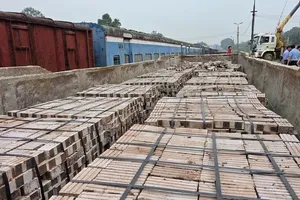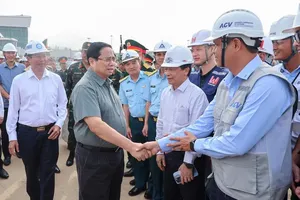
These are tasks for the Government and enterprises respectively, they added.
The seminar was organised by the Vietnam Farmers’ Association, the State Bank of Vietnam and the Ministry of Agriculture and Rural Development.
According to the State Bank of Vietnam (SBV), total outstanding loans for hi-tech agriculture have reached nearly VND32.34 trillion. The loans have been given to 4,125 customers, 3,957 individuals and 168 enterprises.
Nearly VND27.74 trillion (about 86 percent) of these loans were given to high-tech agricultural projects and the remaining VND4.602 trillion to clean agriculture projects. There was no bad debt, the central bank said.
A number of large-scale high-tech projects have begun operations, involving the breeding of cows, horticulture and fruit and vegetable exports.
The Bank for Agriculture and Rural Development has committed to a VND50 trillion soft loan package for hi-tech and clean agriculture programmes and projects. Loans under this package will be given at interest rates 0.5-1.5 percent lower than normal lending rates.
Despite this, the reality was that encouraging high-tech and clean agriculture was fraught with risk, especially without stable consumption markets, the experts said.
They added that there were not enough tools in the country to distinguish and protect high-tech and clean agriculture projects from normal ones.
There was also a lack of guidance on the granting of ownership certificates for assets on agricultural land, including greenhouses and other facilities, the seminar heard.
Nguyen Duc Huong, chairman of the Lien Viet Post Commercial Joint Stock Bank (LienVietPostBank), said that hi-tech agriculture was often associated with high production costs and there was not enough consumer confidence in clean farming products.
He also noted that investment in agriculture carried greater risks because it depended on many uncertain factors like the weather.
The State should have policy incentives for businesses to consume farmers’ products, Huong said.
He also said co-operation among farmers, and between farmers and enterprises would help them expand production, improve processing and consumption, thereby fostering stable production, increase in product quality and the building of recognisable brands.
Le Thanh, Director of the Institute of Organic Agriculture Economics and General Director of the Ket Noi Xanh Joint Stock Company, said that hi-tech agriculture was a mode of production, not an economic model, so it must be closely linked to new value chains.
For instance, "if an enterprise has an investment of VND3-4 trillion for high-tech agriculture projects without a market, this will turn into a debt for banks, businesses and investors," he said.
"The value chain will only succeed if farmers can frequently access transparent, accurate, updated market information," he said.
Thanh also said the State should pay attention to building mechanisms and creating conditions for investors for developing supply chains. This would create the benefits of tax collection and job creation, he added.
Phạm Thị Huân, General Director of Ba Huấn Cô, Ltd, said many businesses wanted to produce clean farm products but they couldn’t afford the large capital that was required.
The State should, therefore, issue support policies for clean agriculture production and improve the quality of agricultural development.
To support the development of adequate distribution systems, the agriculture ministry co-operated with other agencies and sectors to develop policies on credit, commercial infrastructure, land, tax, production, processing and post-harvest preservation, said Hoàng Anh Tuấn, deputy director of the Ministry of Industry and Trade’s Domestic Market Department.
Economist Vo Tri Thanh said the market would eventually promote high-tech agricultural production, but the initial development phases would carry risks and instability.
To develop hi-tech agriculture, the state should also perfect the insurance schemes for the sector. This would be a key factor in having businesses and farmers share risks inherent in agricultural production, he said.
























